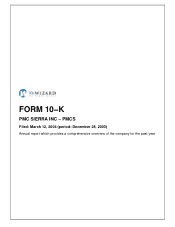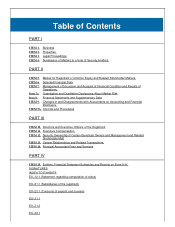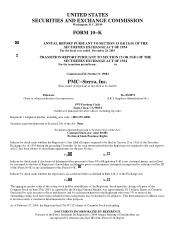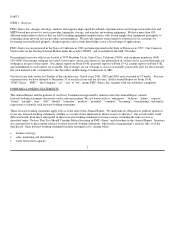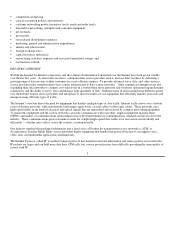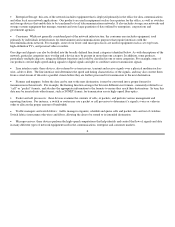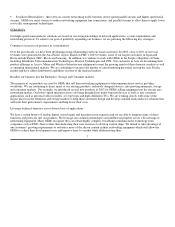Adaptec 2003 Annual Report Download - page 7
Download and view the complete annual report
Please find page 7 of the 2003 Adaptec annual report below. You can navigate through the pages in the report by either clicking on the pages listed below, or by using the keyword search tool below to find specific information within the annual report.
• competition and pricing;
• critical accounting policies and estimates;
• customer networking product inventory levels, needs and order levels;
• demand for networking, enterprise and consumer equipment;
• net revenues;
• gross profit;
• research and development expenses;
• marketing, general and administrative expenditures;
• interest and other income;
• foreign exchange rates;
• capital resources sufficiency;
• restructuring activities, expenses and associated annualized savings; and
• our business outlook.
INDUSTRY OVERVIEW
Worldwide demand for Internet connectivity and the volume of information transmitted over the Internet have both grown steadily
over the last few years. As data traffic increases, communication service providers seek to increase their revenues by delivering a
growing range of data services to their customers in a cost−effective manner. To provide advanced voice, data, and video services,
service providers must transition their voice−centric infrastructure to data−centric networks. Other commercial enterprises are also
expanding their data networks to compete cost−effectively in a world where more and more daily business operations require Internet
connectivity and the ability to move, store and manage large quantities of data. Different types of data transmitted at different speeds
over the Internet require service providers and enterprises to invest in multi−service equipment that efficiently handles, processes and
transports many different types of traffic.
The Internet’s structure drives the need for equipment that handles multiple types of data traffic. Internet traffic moves over a hybrid
series of distinct networks, with each network built using copper wires, coaxial cables or fiber optic cables. These networks carry
high−speed traffic in the form of electrical and optical signals that are transmitted and received by complex networking equipment.
To ensure this equipment and the various networks can easily communicate with each other, original equipment manufacturers
(OEMs) and makers of communications semiconductors have developed numerous communications standards and protocols for the
industry. These communications protocols make it easier for complex high−speed data traffic to be sent and received reliably and
efficiently — whether intra−office, across the country, or internationally.
One industry standard that packages information into a fixed−size cell format for transportation across networks is ATM, or
Asynchronous Transfer Mode. Many service providers deploy equipment that handles this protocol because it can support voice,
video, data, and multimedia applications simultaneously.
The Internet Protocol, called IP, is another transport protocol that maintains network information and routes packets across networks.
IP packets are larger and can hold more data than ATM cells, but, service providers may have difficulty providing the same quality of
service with IP
3

